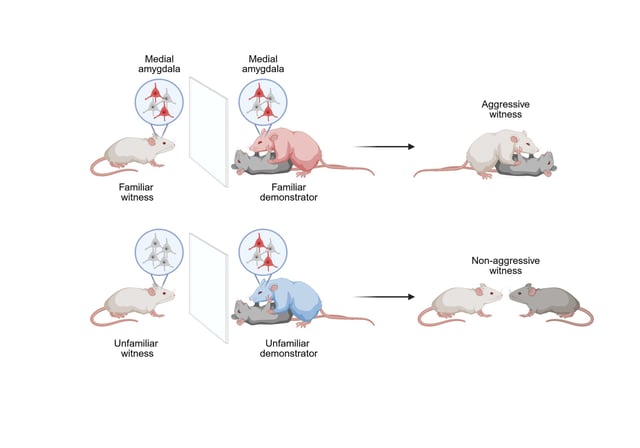Overview
- The Journal of Neuroscience published the work by Jacob Nordman and colleagues at Southern Illinois University School of Medicine.
- In a controlled paradigm, mice watched either familiar cage-mates or unfamiliar strangers attack an intruder before their own behavior was assessed.
- Only male observers later initiated more attacks, and only after viewing aggression by familiar peers.
- Neural recordings showed medial amygdala cells tied to aggression priming were active during familiar, not unfamiliar, observations.
- Inhibiting these neurons abolished the learned aggression, while activating them during stranger observations induced later attacks, highlighting familiarity as a risk factor and the circuit as a potential intervention target in this mouse model.

